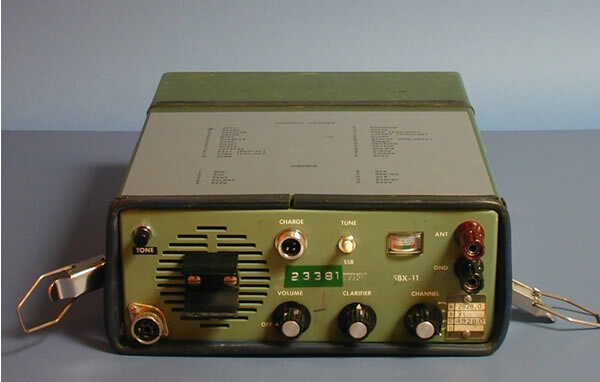Far North Rambles #12: Russia Calling
In my early years as a field geologist, working in the far north, we used a SBX-11 radio (Photo 1) to stay in daily communication with our mothership base station or other geological mapping crews working in a region. The highlight of one of our evening communication schedule was - get ready - listening to discussions originating from Russia!
Photo 1: A typical green SBX-11 two-way radio that was in common use in the mid-1970’s. It was a Canadian invented and made communication radio, manufactured in British Columbia by Spilsbury and Tindall Ltd.. Photo from The Virtual Museum of Police Communications (https://www.qsl.net/zl1cop/Exhibits/SBX11%20HF/SBX11.htm).
The SBX-11 is described as a simple, easily operated, easily serviced two-way radio that had a history of use across the world in remote areas including the Arctic, remote areas of the Boreal forest, and in deserts. It ran on batteries. It required a long antenna, on the order of 50 and 150 feet in length, although my memory lets me down on that detail. The famous green-coloured, portable, SBX-11 radio was made in Canada by Vancouver's Spilsbury and Tindall Ltd. in the early 1970s.
When we arrived to set up a remote bush camp, and as soon as the float plane left, the first task was to take the chainsaw and cut a 150 foot long line, about 1 meter wide, oriented more or less at right angles to the location of the mothership base station. A tall tree anchored both ends of the antenna line. Once the trail was prepared, we would string the antenna up as high as possible, ensuring the cable reached the SBX-11 located in the office tent. One of the job responsibility of the summer students to climb a tall tree to attach the antenna (Photo 2). That opening ritual of setting up a new bush camp was based on the assumption that should an accident occur during camp set up, the SBX-11 would be ready to leap into action.
Photo 2: One of the job responsibilities of the summer students was to climb a tall tree to attach the end of the antenna for the SBX-11 communication radio. This was summer student “Dave” who “volunteered” to attach the antenna at a geology fly camp, northern Ontario, close to the Windigo River, summer 1976. Photo by Andy Fyon.
We had a simple radio schedule. At 7 PM each evening, we would contact the mothership in Pickle Lake. If the initial attempt failed, we would leave the radio on for a hour or two in case the atmospheric conditions improved and contact was made. If that evening contact failed, we would try again at 7 AM the next morning. If that contact failed, we would try at 7 PM the following evening. If that contact failed, a plane was dispatched from Pickle Lake, or Sioux Lookout, or Red Lake to fly to the camp. That was considered a mercy flight to recover the wounded, or worse. On a good day, you could communicate with other SBX-11 users several hundred km away. On many days, communication was just not possible, perhaps because of atmospheric conditions. As I recall, the radio waves traveled long distances because they skipped off layers in the atmosphere. But the atmosphere is fickle and is influenced by our Sun and its solar storms. If you saw fabulous northern lights, known officially as Aurora Borealis, you knew your radio communication was going to be a challenge.
Several times during one Ontario summer, we had terrible radio communication. Each evening we would try. Each evening the SBX-11 gleefully responded with a mysterious melody of really irritating radio squatch consisting of noisy static, scratching, and garbled human-like sounds. One week, we heard clearly what sounded like Russian communication! Yes, Russia was calling. You can imagine the excitement in camp when we concluded we had tapped into sensitive Russian communication between their military ground crews. No, between the Russian military ground crews and their intercontinental bombers inbound over the Arctic to test North American DEW line defenses!
Happily, no bombs fell. No sovereignty was violated. But it was mildly amusing to realize that we could NOT communicate with our mothership base in Pickle Lake, about 200 km away, but we COULD communicate with Russia, about 2000 km away! And yes, listening to what we assumed had to be “top secret” Russian communication was definitely the highlight of the summer communication rituals!
By the way, if you are wondering why we did not receive a mercy flight the week of the Russian communication, we were able to connect with a 3rd party geological field crew working around Eagle Lake and they used a telephone to call back up to Pickle Lake to let of base manager know that we were OK. Team work, even by employees of a different company.
Have A Question About This Note?
Andy Fyon, Aug 17, 2020 (Facebook: April 10, 2020).


